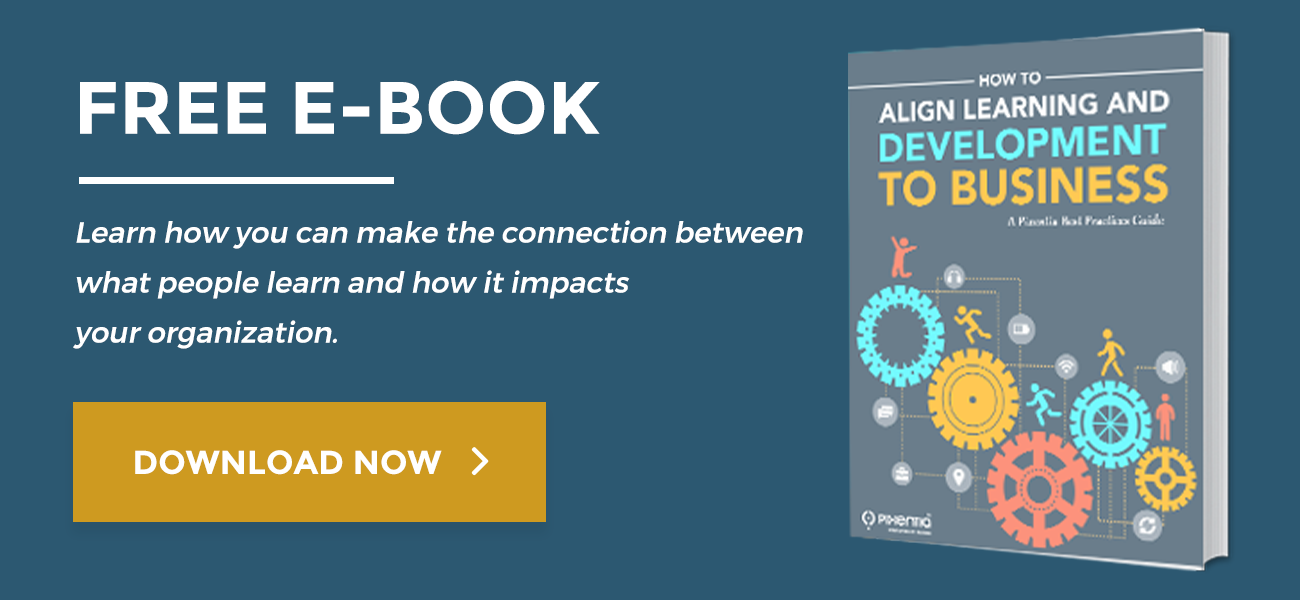
If you are still struggling with measuring learning impact, you are not alone. Brandon Hall Group’s research summary Learning Measurement 2016: Little Linkage to Performance by David Wentworth paints a gloomy picture of the current state of measurement in learning. The report concludes that only 6% of respondents in their study are linking learning to performance.
The conclusions in the report give us more questions than answers. While the responses give us a good idea of the general state of measurement, what the answers mean in individual cases would require in-depth study in each organization.
Here’s our take on the conclusions of the report:
Most of the Need to Measure Learning Comes from within the Learning Function.
We have been led to believe by most pundits that top executives are demanding ROI measures, but the study shows that only 35% of the pressure for measurement is coming from the executive suite or business leaders.
The report doesn’t tell us what other dynamics are at work. Executives may have despaired of getting performance linkage from L&D, and in many companies, individual business functions are managing their own learning. They contract learning initiatives with one purpose in mind– improving performance. Their gains show up in their KPIs but have nothing to do with what is going on in L&D.
Still, if participation in training programs for learning measurement is any sign, there is a strong desire to measure learning outcomes. We are confident that those L&D leaders who apply themselves diligently to learning measurement will prevail.
Companies are struggling to measure informal and experiential learning.
Measuring information and experiential learning can be difficult, but the means and technology are available to make it easy. The difficulty lies in balancing burdening learners and their managers and getting their assessment of results. Quick, easy mobile surveys are now simple to deploy and track.
Line-of-business leaders are accustomed to forecasting and estimation, and if they are involved in learning programs and invested in the results, they will help. The solution is to engage them in initiatives from the outset.
One tendency that gets in the way is the irrational need for perfect measurement. Many people labor under the assumption that if you measure something, it must be exact to be meaningful. That is far from true. In scientific inquiries, estimates are all we have, and they work well. The measurements used in the moon landings of the 1960s and 1970s were estimates. Eratosthenes (ca. 276-194 B.C.) estimated the size of the earth within 3% by measuring shadows.
Few companies measure beyond Kirkpatrick levels 1 and 2.
No mystery here. This is where the easily measurable activity takes place.
Organizations use mostly basic metrics and few outcomes to measure learning.
Basic metrics are easier to collect, and most teams are busy enough without managing additional data collection efforts. As many organizations learned during the quality movement of the 1980s, you can become overwhelmed when you try to measure too much. Measuring what matters is enough.
ROI is not a top driver of measurement.
We agree with Wentworth that ROI is not as important as learning impact. What CEOs care about is performance. What doesn’t belong in the company’s income statement may still be an important measure for making business decisions. An estimate of business impact is sufficient, and sometimes intangibles can be substantial factors in decisions.
Align Learning to Business
You need not be alarmed if you are still struggling with learning measurement. You are not alone.
By aligning learning to business, you will find over time that the help and resources you need will be available. We recommend that you embark on an alignment journey by building alliances with line-of-business leaders. Work with them to use learning to solve their performance challenges. Use their performance measures to show the value of learning.
Get a head start on alignment by downloading our free e-book How to Align Learning to Business.
References:
Pixentia is a full-service technology company dedicated to helping clients solve business problems, improve the capability of their people, and achieve better results.


